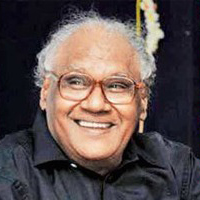C. N. R. Rao
Chintamani Nagesa Ramachandra Rao FRS, also known as C. N. R. Rao, is an Indian chemist who has worked mainly in solid-state and structural chemistry. He has honorary doctorates from 83 universities from around the world, and has authored around 1,770 research publications and 53 books.
Dr Chintamani Nagesa Ramachandra Rao, Linus Pauling Research Professor and Honorary President of the Jawaharlal Nehru Centre for Advanced Scientific Research (JNCASR), Bangalore, is one of the most distinguished scientists of India today. He is the Chairman of the Scientific Advisory Council to the Prime Minister of India and was honoured with a National Research Professorship in May 2006. Professor Rao is a world-renowned authority in solid state and structural chemistry. He has made seminal contributions to chemical spectroscopy, molecular structure, surface chemistry, high temperature superconductivity. More recently, his interest has shifted to nano sciences and nanotechnology.
Rao is one of the world’s foremost solid state and materials chemists. He has contributed to the development of the field over five decades His work on transition metal oxides has led to basic understanding of novel phenomena and the relationship between materials properties and the structural chemistry of these materials.
Rao was one of the earliest to synthesise two-dimensional oxide materials such as La2CuO4. He was one of the first to synthesise 123 cuprate, the first liquid nitrogen-temperature superconductor in 1987. He was also the first to synthesize Y junction carbon nanotubes in the mid-1990s His work has led to a systematic study of compositionally controlled metal-insulator transitions. Such studies have had a profound impact in application fields such as colossal magnetoresistance and high temperature superconductivity. Oxide semiconductors have unusual promise. He has made immense contributions to nanomaterials over the last two decades, besides his work on hybrid materials.
C.N.R. Rao was born in a Kannada Madhva Brahmi] family in Bangalore to Hanumantha Nagesa Rao and Nagamma Nagesa Rao. His father was an Inspector of Schools.He was an only child, and his learned parents made an academic environment. He was well versed in Hindu literature from his mother and in English from his father at an early age. He did not attend elementary school but was home-tutored by his mother, who was particularly skilled in arithmetic and Hindu literature. He entered middle school in 1940, at age six. Although he was the youngest in his class, he used to tutor his classmates in mathematics and English. He passed lower secondary examination (class VII) in first class in 1944. He was ten years old, and his father rewarded him with four annas (twenty-five paisa). He attended Acharya Patashala high school in Basavanagudi, which made a lasting influence on his interest in chemistry. His father enrolled him to a Kannada-medium course to encourage his mother tongue, but at home used English for all conversation. He completed secondary school leaving certificate in first class in 1947. He studied BSc at Central College, Bangalore. Here he developed his communication skills in English and also learnt Sanskrit.
He obtained his bachelor’s degree from Mysore University in 1951, in first class, and only at the age of seventeen. He initially thought of joining Indian Institute of Science (IISc) for a diploma or a postgraduate degree in chemical engineering, but a teacher persuaded him to attend Banaras Hindu University. He obtained a master’s in chemistry from BHU two years later In 1953 he was granted a scholarship for PhD in Indian Institute of Technology Kharagpur. But four foreign universities, MIT, Penn State, Columbia and Purdue also offered him financial support. He chose Purdue. His first research paper was published in the Agra University Journal of Research in 1954. He completed PhD in 1958, only after two years and nine months, at age twenty-four

C. N. R. Rao
Date of Birth: 30 Jun 1934
Birth Place: Bengaluru
Proffession: Indian chemist
Nationality: Indian


